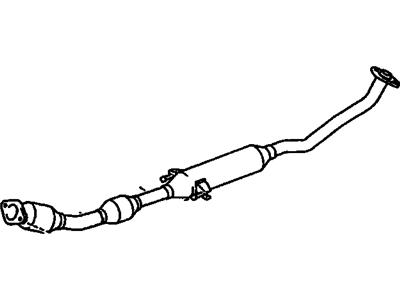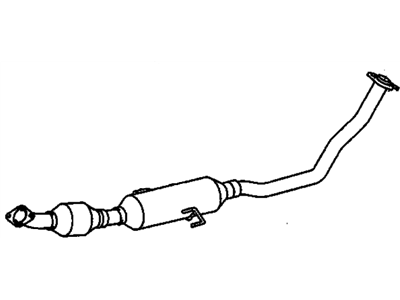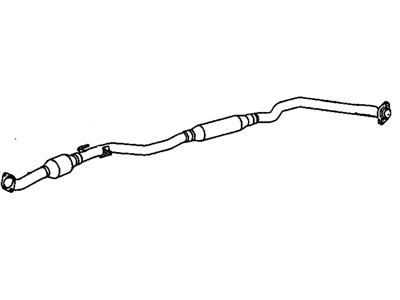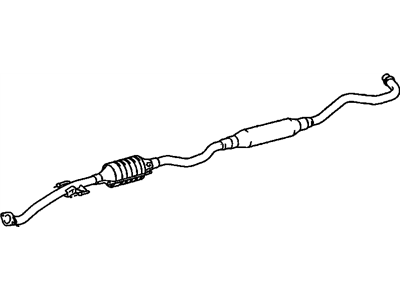
My Garage
My Account
Cart
Genuine Pontiac Vibe Catalytic Converter
Cat. Converter- Select Vehicle by Model
- Select Vehicle by VIN
Select Vehicle by Model
orMake
Model
Year
Select Vehicle by VIN
For the most accurate results, select vehicle by your VIN (Vehicle Identification Number).
10 Catalytic Converters found
Pontiac Vibe 3Way Catalytic Convertor (W/Exhaust Manifold Pipe & Resonator)
Part Number: 88975825$642.67 MSRP: $956.67You Save: $314.00 (33%)Ships in 1-3 Business DaysPontiac Vibe 3Way Catalytic Convertor (W/Exhaust Manifold Pipe)
Part Number: 88973519$1242.33 MSRP: $1861.13You Save: $618.80 (34%)Ships in 1-3 Business DaysPontiac Vibe 3Way Catalytic Convertor (W/Exhaust Pipe)
Part Number: 88975826$600.64 MSRP: $893.26You Save: $292.62 (33%)Ships in 1-3 Business DaysPontiac Vibe 3-Way Catalytic Convertor Assembly (W/ Exhaust Manifold Pipe)
Part Number: 19205433$992.35 MSRP: $1484.08You Save: $491.73 (34%)Ships in 1-3 Business DaysPontiac Vibe 3Way Catalytic Convertor (W/Exhaust Pipe)
Part Number: 88975827$614.84 MSRP: $914.69You Save: $299.85 (33%)Ships in 1-3 Business Days
Pontiac Vibe Catalytic Converter
The Catalytic Converter in Pontiac Vibe vehicles is a part of the exhaust emission control system that helps in change of pollutive gases such as Carbon Monoxide, Hydrocarbons, and Oxides of Nitrogen into less dangerous contents like water, Carbon Dioxide, and Nitrogen. To accomplish this metamorphosis, this device is supplied with such substances as platinum, palladium or rhodium which act as catalysts to bring about the redox reactions. Various types of Catalytic Converters have been implemented in various years, and today, Catalytic Converters has a honeycomb construction for maximum contact of a catalyst. Aging, mechanical damage or exhaust system restriction are some of the causes of a converter failure accompanied by performance issues, metal-on-metal noises, and illuminated 'check engine' light. Thus, as an exhaust treatments device that decreases dangerous emissions and enhances engine efficiency, the Catalytic Converter is a major component of environmental conservation and emissions standards in Pontiac Vibe vehicles.
Each OEM Pontiac Vibe Catalytic Converter we offer is competitively priced and comes with the assurance of the manufacturer's warranty for the part. Furthermore, we guarantee the speedy delivery of your orders right to your doorstep. Our hassle-free return policy is also in place for your peace of mind.
Pontiac Vibe Catalytic Converter Parts Questions & Experts Answers
- Q: How to replace a catalytic converter on Pontiac Vibe?A: A dealer service department should be consulted before replacing a catalytic converter at your own expense because of an extended warranty that the Federal government has mandated. The catalytic converter is a device for controlling emissions which minimizes pollutants in the exhaust stream. There are two kinds of converters available; the conventional oxidation catalyst and three-way catalyst. Diagnosis and repair for this malfunction are best done by taking your vehicle to a dealer or authorized emission inspection facility, since test equipment for a catalytic converter are expensive and sophisticated. When servicing any underbody components, ensure checking the converter for leaks, corrosion, dents or other damage.Pay attention to the welds/flange bolts that attach the front and rear ends of the converter to the exhaust system. If any damage is found then replace the converter. Although rare, catalytic converters do fail sometimes-they can plug off. To check whether a converter is restricted or not, use a vacuum gauge to see how blocked exhaust affects intake vacuum.Connect the vacuum gauge to an intake manifold vacuum source, warm up the engine until it reaches operating temperature, and record vacuum readings at idle and after opening and closing throttle.If reading after fourth test is significantly lower than idle reading, there might be restriction in exhaust system. Spray nuts on the exhaust flange studs before removing them when replacing a catalytic converter. Remove nuts and separate the converter from exhaust manifold then cut off rear portion if necessary. Weld in new gaskets where required.













